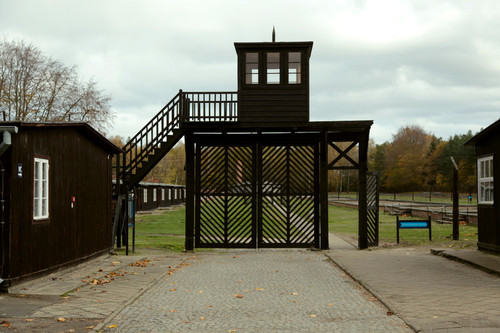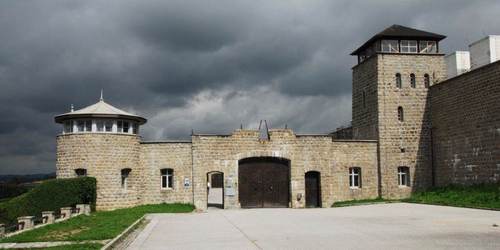Stutthof-Sztutowo and Mauthausen
STUTTOF-SZTUTTOWO
Stuttof-Sztuttowo was the first concentration camp to be built outside Germany, Austria and the annexed areas of Czeslovakia on September 2, 1939. Built 34km from Danzig. The camp had some 40 sub-camps.
The inmates were housed within eight barrack blocks. In 1942 another thirty barracks were built to house additional prisoners and a gas chamber and crematoria was added. The gas chamber could hold up to at least 150 victims at a anyone time.
From 1939-1945, no fewer than 127,000 prisoners were registered upon their arrival at the camp and it is known that at least 85,000 of these registered inmates were murdered within the compounds of the camp and many thousands more, unregistered victims perished here also. The exact number of dead is unknown.
After the war, the Commandant, Max Pauli was tried by an Allied tribunal and sentenced to death. SS-Hauptsturmführer (captain) Werner Hoppe, who was the camps security officer was sentenced to only nine years imprisonment for his part in the mass killing of the inmates.
It was this camp that supplied murdered inmates to another SS officer, Professor Rudolf Spanner. Spanner was also a scientist who owned a small soap making factory in Danzig. In 1940, he discovered a process to turn human fat into soap. His product was named R.J.S (Reines Judische Fett) which simply meant-Pure Jewish Fat. Hundreds died to supply Spanner with the soap’s main ingredient. On May 10th, 1945, the Russian Army liberated the camp, which made it the last concentration camp to be freed. After the fall of the Third Reich, Spanner was never arrested for his crimes.
Stuttof-Sztuttowo KZ (above) and Mauthausen (below) as they look today.
Mauthausen Concentration Camp
This camp was built near Linz, upper Austria, after the German annexation of Austria in 1938.
Himmler believed that it would be too much trouble to ship Austria's undesirables to German concentration camps so he decided that Austria should have its own holding centres.
In 1941 over 1000 Dutch Jews were deported to Mauthausen to work as slave labourers within the local granite works and a further 600 Italian Jews were sent to the camp after Germany started their round up of Italian Jews in occupied Italy in 1944. When Germany started its ethnic cleansing of Hungry, thousands of other Jews were relocated to Mauthausen. Mauthausen was classified as a concentration camp and not as death camp, but according to the camps Totenbuch (death book) 36,318 inmates were executed during its time of existence. The true figure could be much higher as like other camps, accurate records were never kept.
The Germans ensured that the camp was well known about within the local community as a way to keep order and rebellious individuals under check. On April 25, 1945, the camp, along with Dachau and Theresienstadt was cut off from Berlin with the advance of the Allied armies and eventually liberated.
"That in this camp, they locked up children, and I feel the Americans were right to make us see it, and this is still my point today when people doubt the figure of five or six million (Jews) dead and make a comparison with the number of German soldiers who died in the war; or who say that two million Germans died after capitulation in May 1945, my only reply can be that if it was only eight children that I saw there, it was the greatest shame of all time."
(Wolf Sendele, a member of the SS in 1932 who was dismissed in 1934 after he tried to expose corruption in his unit. He made the above statement after he was forced by the Americans to help clear the mess that was Mauthausen concentration Camp after the war)

